There is a trend in commercial incense burners of having the cone fully exposed instead of trying to make a wind break. The original reason for the rocket was to use it as a wind break but any wind break seems to make a problematic updraft. It could still be useful as an exhaust duct. The latest idea is to chop off the nose & use the cone as the nose. Then make a cylinder all the way up to the nose fins. The hot section would be fully enclosed in the cylinder & go down to the tail fins. This eliminates any room to taper the cylinder into a cone. The cylinder could be removed from above the tail fins for cleaning.

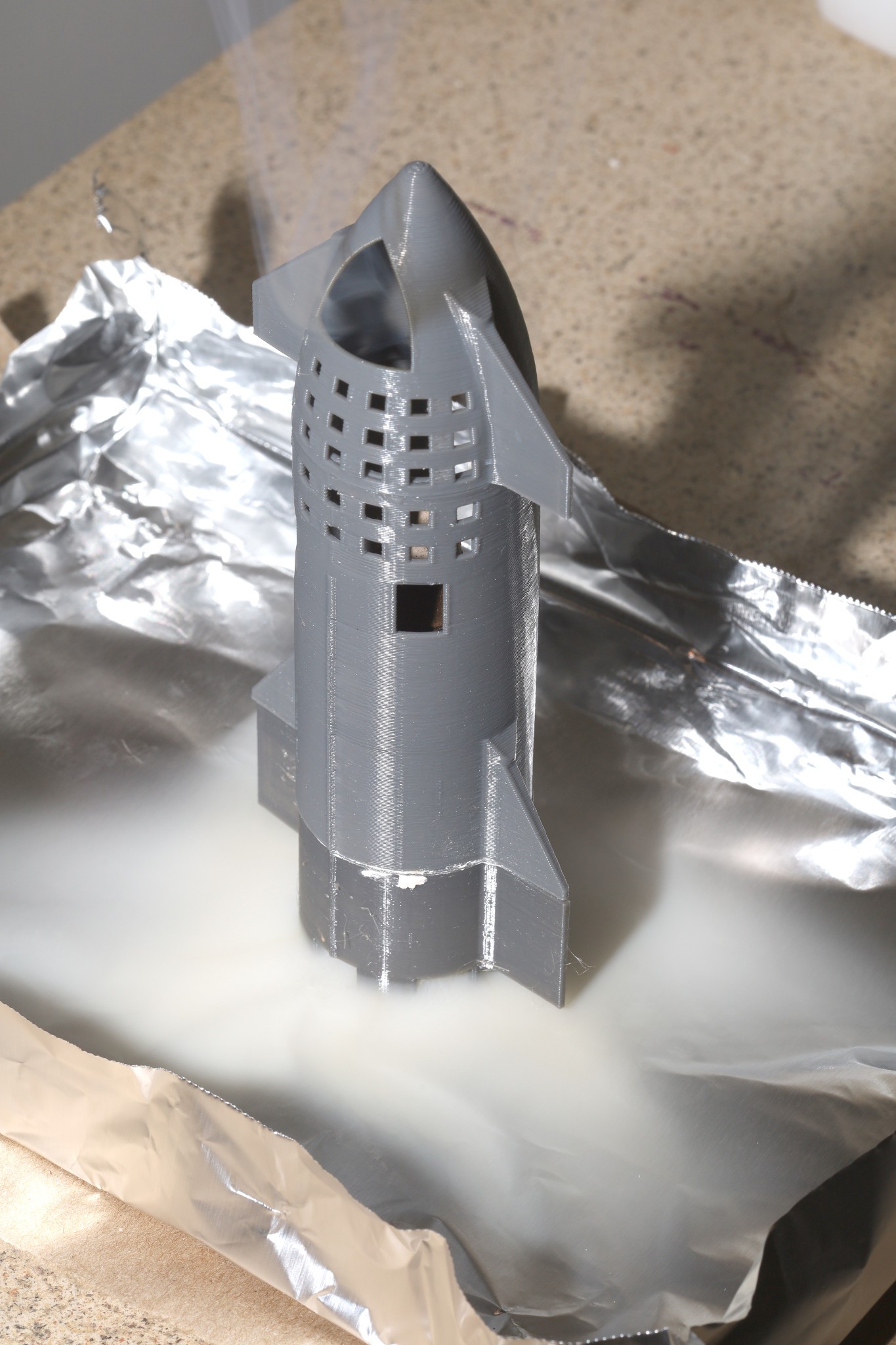
Playing with an aluminum tray some more, it might be good enough with the current amount of holes & just clay securing the hot section & aligning the nose cone. It just needs a PETG nose cone.
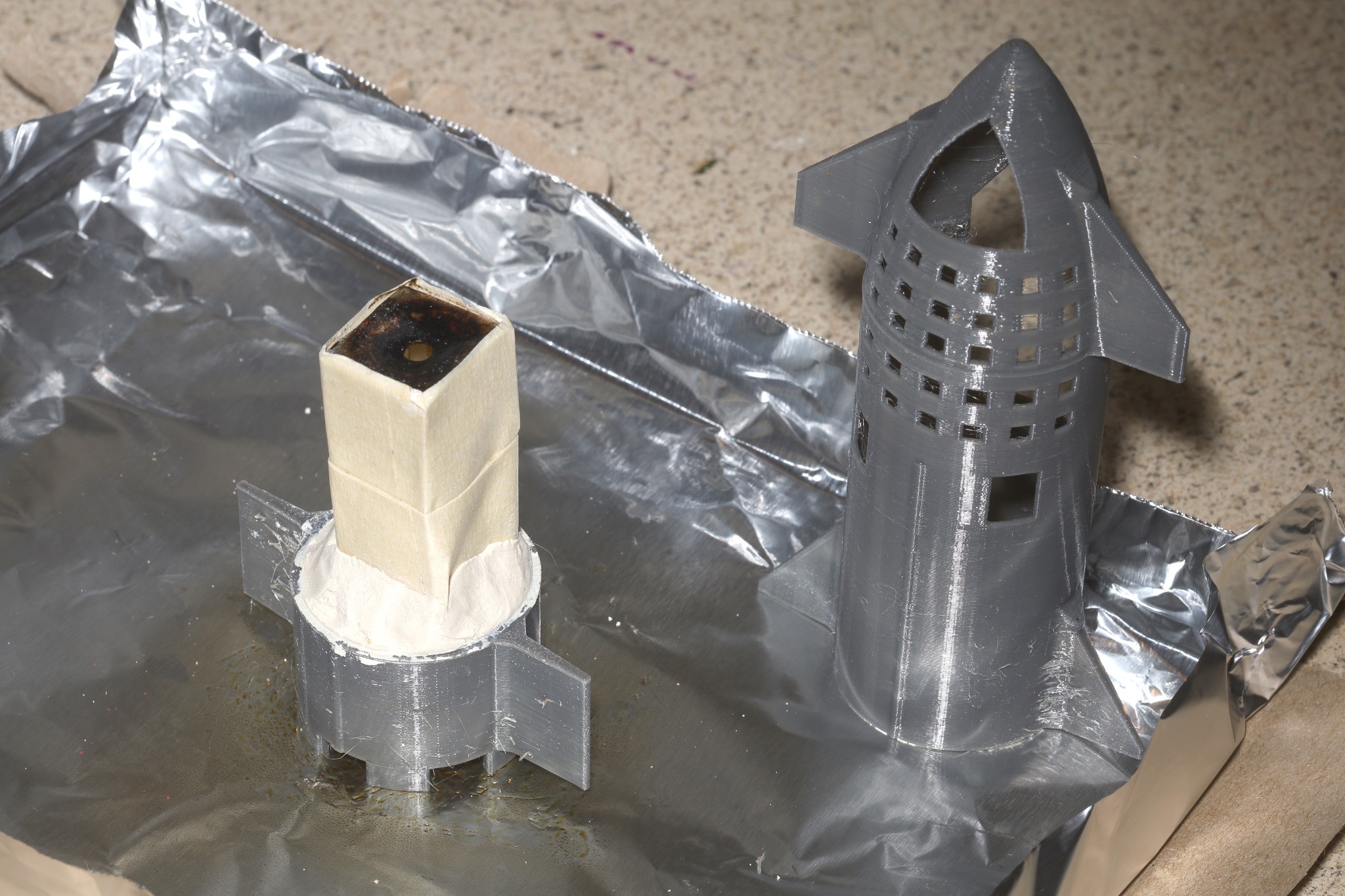
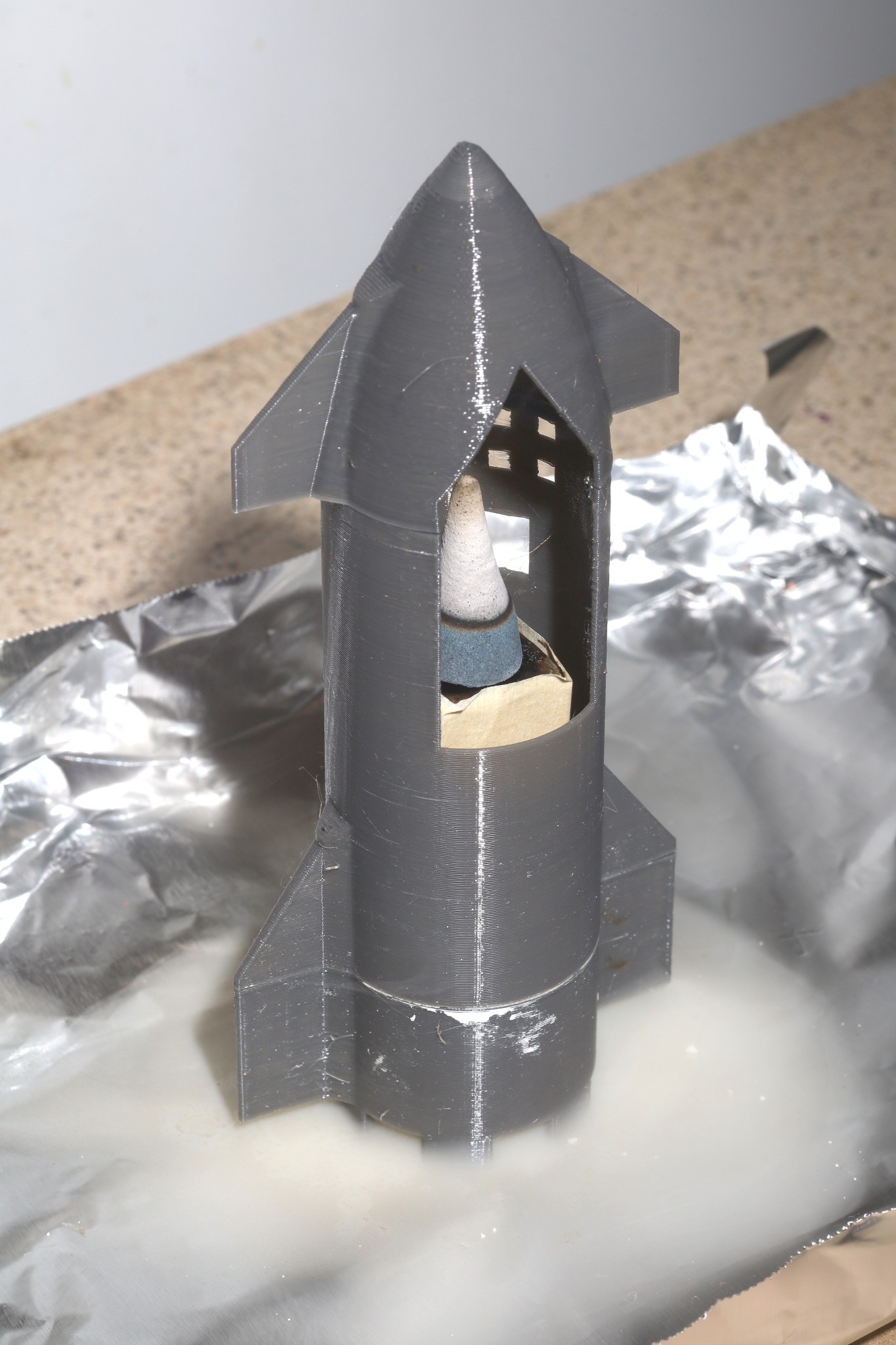
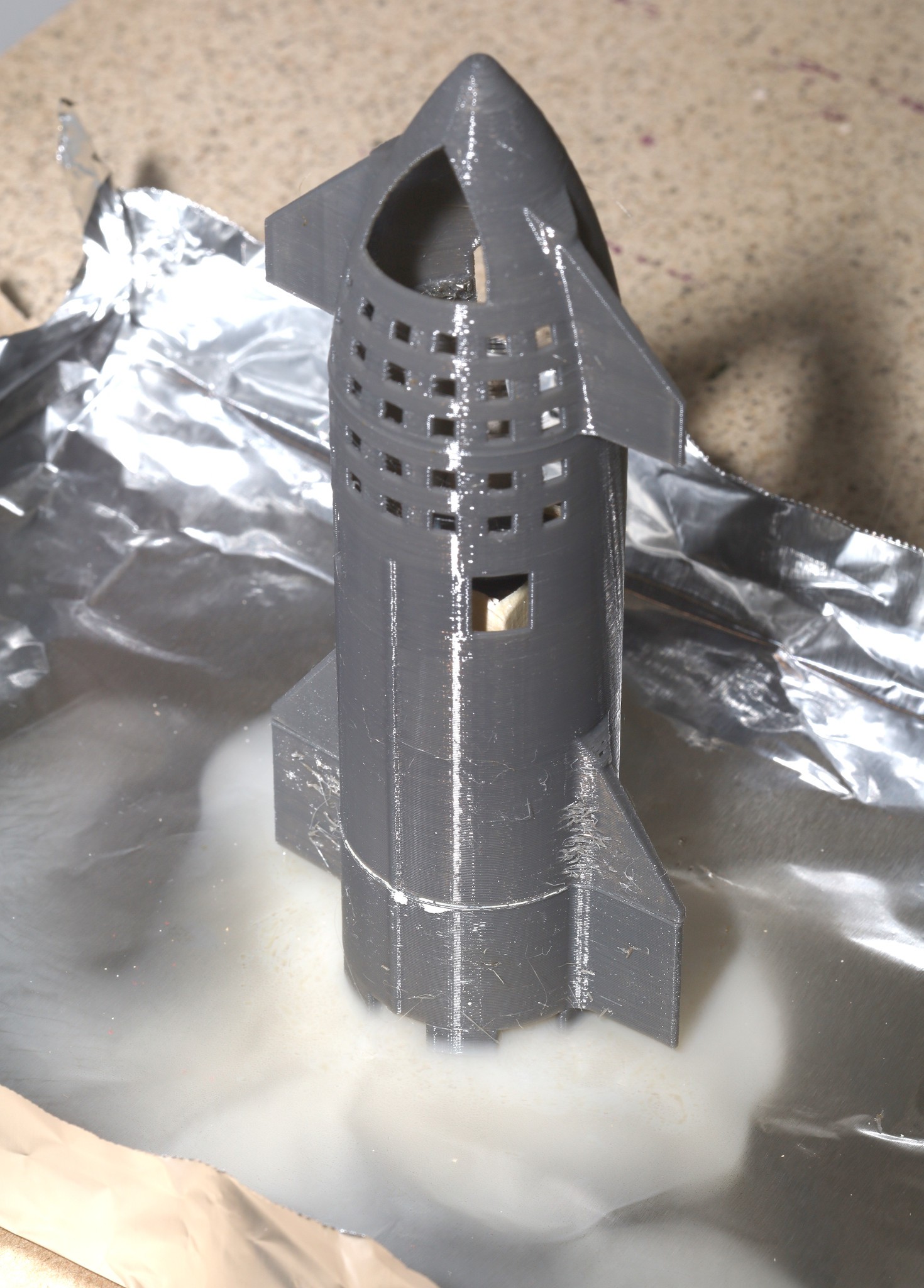
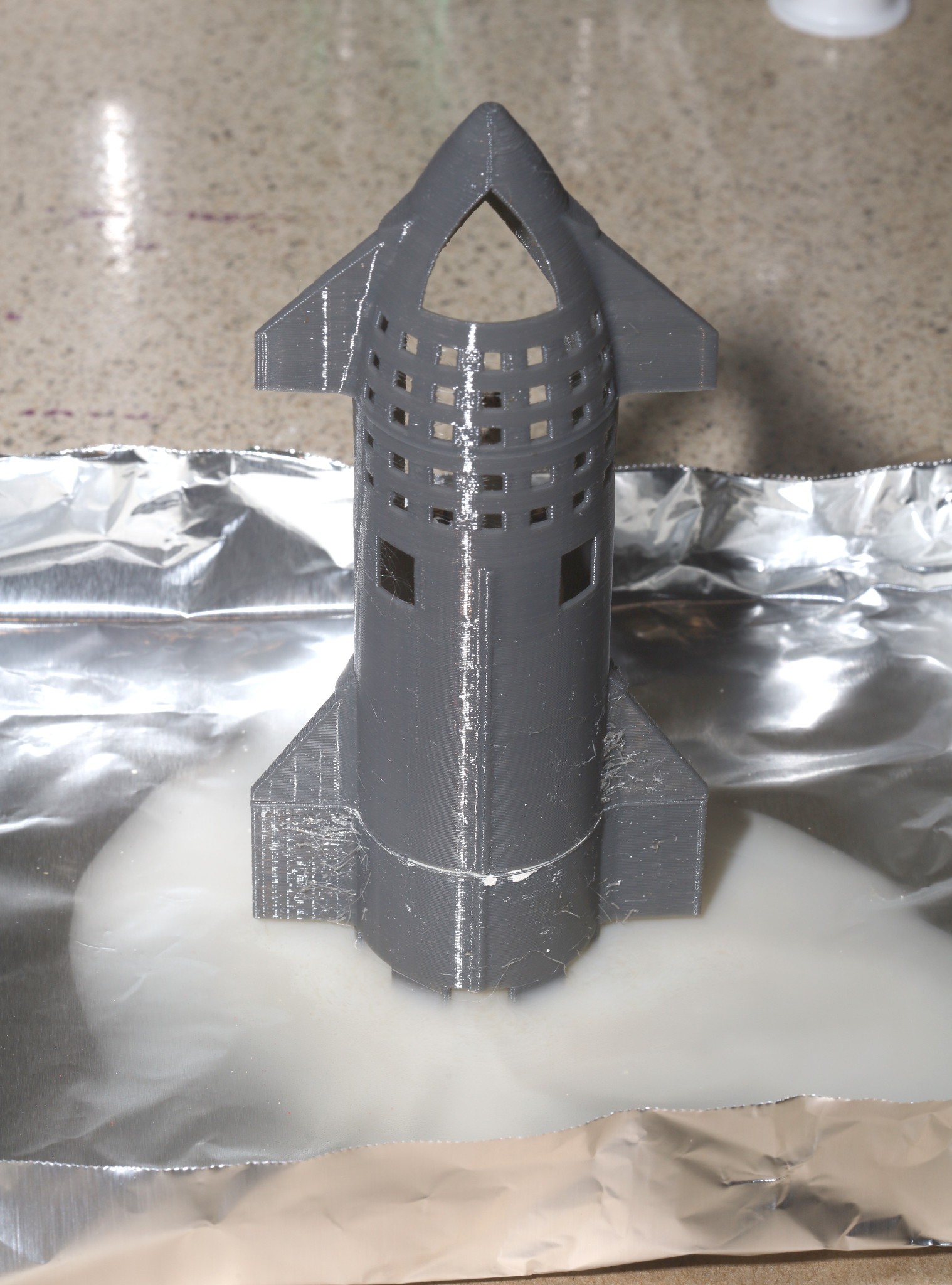
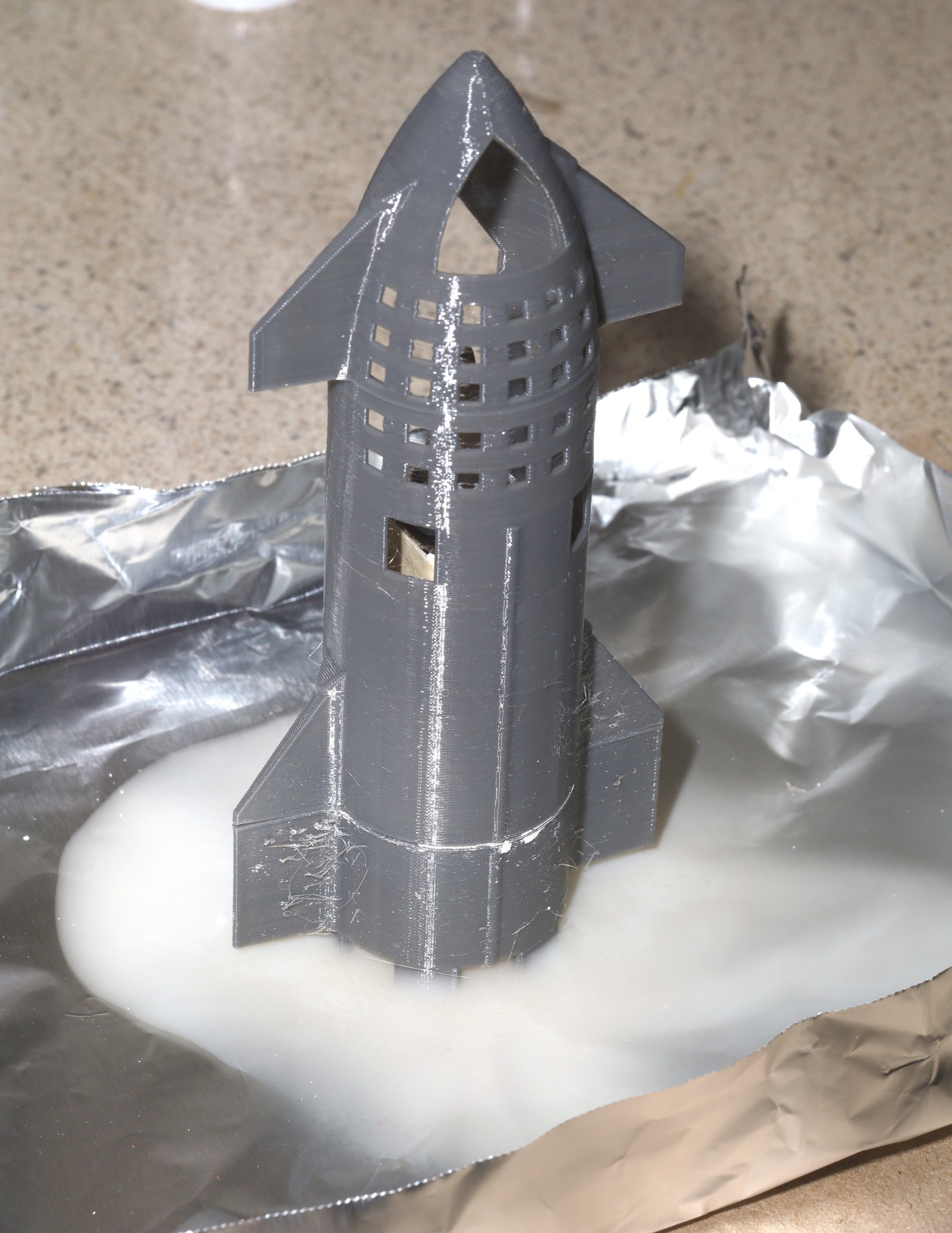
A brand new PETG model achieved the desired smoke, but still got too soft. A system of holes right around the cone seems to give the best results. This cone was manually drilled out.
It gets hottest in the corners right above the cone & it seems to depend on the air currents.
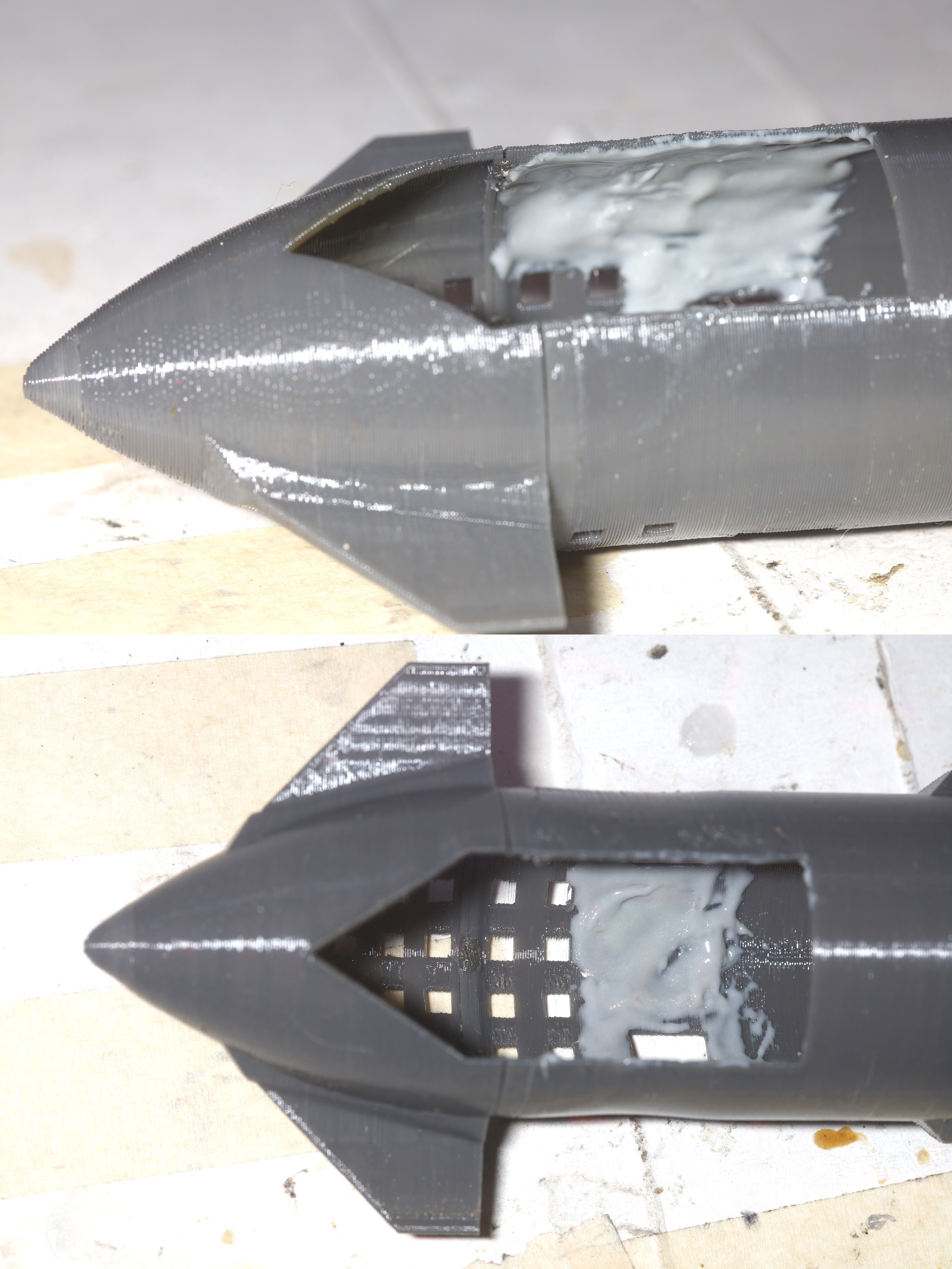
Applied some loctite metal to the trouble spots. This still got too hot to touch, but it managed to keep the PETG from deforming. It remanes to be seen how many cycles it survives & if it stays stuck to PETG. This led to a 1st timelapse of a complete burn.
So basically, the best backflow starship incense burner lions could make ended up being a non functional nose cone on top of an engine section which outgasses like a real engine section. The backflow functionality doesn't serve any purpose other than visual appeal. Maybe it could provide some vicarious audience participation during a starship launch.
 lion mclionhead
lion mclionhead
Discussions
Become a Hackaday.io Member
Create an account to leave a comment. Already have an account? Log In.